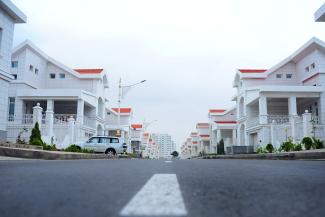
The Current State of the Housing Market
In 2020, COVID-19 put the United States into a recession forcing businesses to shut down and leaving millions of Americans without work. During this time, the housing market boomed. With increasing demand in the past year, primarily in suburban and rural areas, and a low supply of housing, prices and costs of materials have skyrocketed. Bidding wars above asking prices are more standard now. In November of 2020, it was recorded that housing prices had risen about 9.5% in a year with a continued rise to 15% by May 2021.
There are two main reasons for the increase and not all trends were positive for real estate owners. First, the pandemic and civil unrest hit many urban areas hard. Many residents of these cities felt unsafe. The increase in remote working due to the pandemic offered these residents a way to move to rural areas and continue working. Second, interest rates were and remain very low. This allowed renters to purchase homes or homeowners to purchase a second home. The exodus from urban centers was not beneficial to commercial real estate owners in these areas. Office spaces and apartments were also vacated once leases expired with little to no demand to fill those vacated spaces.
Building supplies and labor costs are also up significantly driving up the cost of new construction thereby making it more expensive for supply to meet demand. At the same time there is high demand, supply chain disruption during the pandemic has also reduced the amount of building supplies being produced. An example of a building material that has increased in price is lumber. At the very start of the pandemic, the demand for lumber was down due to the fact people were not building or improving homes because they were worried about where the pandemic would leave the economy. Naturally, dealers and producers cut production and unloaded inventory in fear of a housing crash. The crash did not happen. Instead, Americans took up housing renovation projects, while the recession-induced interest rates created a housing boom. The sudden rise in home improvements and construction required a lot of lumber and the mills could not keep up because of cutting their production. Additionally, since people have been homebound due to lockdowns and remote work, they have undertaken home improvement projects which has increased the demand for supplies and labor. Energy costs are also up sharply since the pandemic first set in. These factors are reason for the increase of housing prices.
Many question if this is a bubble. It can be argued that it is in fact overdone. The supporting factors surrounding it are the increasing prices, the “contagion” factor, with some homebuyers acting impulsively in order to get a house, and the Federal Reserve’s involvement in the mortgage market. Housing bubbles usually start with an increase in demand during a time of limited supply, which has occurred in this instance. Along with the “contagion” factor, many people believe that if they do not buy a house during this boom, then they will never be able to purchase one. The Fed also bought over $1 trillion in mortgage bonds last year in order to lessen the impact of the pandemic on the housing market. This has significantly lowered mortgage rates which has led people to feel they need to buy a home quickly before rates inevitably rise again. Over time, will we see these “city slickers” move back to the cities? It is certainly possible if they feel the cities are safe again, they miss the amenities of the cities and/or their employers are back in the office. Apartment rentals are already on the rebound in urban centers now that COVID restrictions are lessening. Hopefully, any correction in home prices that may unfold will not be so severe as to significantly affect homeowners that paid a premium in this market.
There are also strong arguments against it being a housing bubble. The largest generation, the millennials, are now in their prime home buying years. Because the largest generation is now buying homes, it is no surprise that there is a sharp increase in demand, it just may have been accelerated by the pandemic. Additionally, many companies will likely change their ways of working and reassess their real estate footprint. Remote working will be a major factor in the economy moving forward.
Whether it is called a housing bubble or not, the current situation will likely cool down with less Fed activity and increased production of building supplies.

